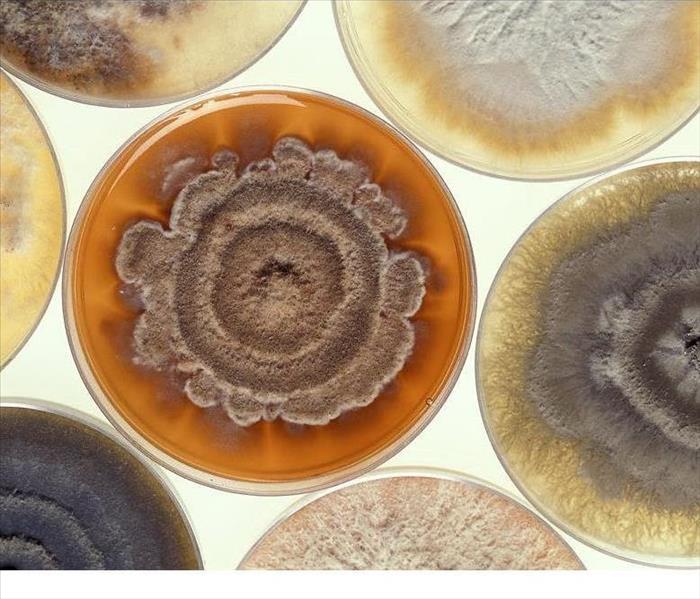For many households, chlorine bleach is generally seen as your “go-to” cleaner for tough jobs. Mold removal does requires a heavy duty cleaner, but recently, many of the hazards of bleach are gaining more media attention causing people to take a closer look at the way they clean.
OSHA (Occupational Safety and Health Administration) was one of the first federal agencies to STOP recommending the use of liquid bleach for mold remediation. The EPA (Environmental Protection Agency) has since edited their “A brief guide to mold and moisture and your home” to exclude their once suggested use of bleach as a means to kill mold.
So what actually is mold? Let’s go over the basics to get a better understanding of how it works and how it should be properly treated.
According to scientists, mold is a type of fungi that is neither plant nor animal. This basically means, unlike plants, it cannot derive energy from the sun or actively “hunt” for food like an animal. Therefore, mold must be opportunistic to survive. In order to reproduce, it regularly sends microscopic spores into the air searching for a suitable environment to live. It only needs a few requirements to survive: water, warm temperatures and a food source. Once it has located the perfect environment, it can begin to grow remarkably fast, sometimes within 24 hours! This is why we often see a mold bloom after flooding, water damage and undetected burst pipes etc…
So now that we know how it works, how do we properly treat it? Big bleach labels have promised you that nothing else will do the job like bleach. Chlorine bleach is most well known for it disinfecting properties but that doesn't mean it's the best choice for mold. It’s main function is to disinfect and to, well, bleach or change the color. But after use, what usually happens? The moldy color looks like it’s gone but within a week or two the mold usually comes back and sometimes worse! Most homeowners don’t put together that it’s the bleach causing this reaction and not a really bad case of mold. The fact remains that if the mold is not removed from the material, it will most likely always return.
Does Bleach kill mold?
Yes, but it comes with a catch. Bleach labels will warn you that chlorine bleach will only be effective on a “hard, non-porous surface.’’ This basically means that chlorine bleach is not made to “soak in.” Therefore, its disinfecting properties are limited to a hard surface like tile or glass. So here’s the problem: To ensure survival, mold spores spread its roots (Mycelia) deep into a porous surface. Mold remediation requires a cleaner to reach deep down into wood and other porous building materials to remove or "pull out" the roots. The properties of bleach prevent it from soaking into these materials. The surface mold looks gone (it's bleached white) but the internal mold always remains to grow back.
Another issue: Bleach contains 90% water and mold LOVES water. When bleach is applied, the chlorine quickly evaporates after use leaving behind A LOT of water. This water often soaks into the porous surface allowing the mold to flourish and re-grow in this moist environment. So in effect, using bleach actually feeds the internal mold spores! Although the surface may look bleached and clean, the remaining spores will root deeper, stronger and will often return worse than before.
"This chemical is considered hazardous by the 2012 OSHA Hazard Communication Standard. Sodium Hypochlorite (Chlorine Bleach) MSDS requires handlers in FULL Personal protection gear including respirators."-CDC.gov
Bleach and mold. A few facts to remember:
- In some cases, bleach will encourage toxic mold to grow where it was not present before.
- Bleach will only remove the green stain from mold. The surface will appear clean but internal roots will continue to grow.
- OSHA and the EPA have specifically advised against the use of bleach for mold remediation. See link below*
- Chlorine bleach is caustic and extremely harmful to wood and many other surfaces. If bleach is used on wood, it will weaken the wood by breaking down its fibers. This can create further problems with the structural integrity of the home.
- When bleach is mixed with ammonia it creates a deadly gas! *Remember, Urine contains ammonia! Using bleach in the toilet could also create a toxic gas.
- Bleach itself is considered a toxic chemical and is classified the same as gasoline.
- In its gaseous form (room temperature) chlorine releases Dioxins, a known cancer causing compound.
- Bleach is highly corrosive to skin. Exposure to bare skin creates a hydrolysis reaction. This means the “oily” feeling is actually the top layer of your skin beginning to dissolve!
- Bleach is not only hazardous to your health, it will make your mold problem worse in the long run.






 24/7 Emergency Service
24/7 Emergency Service
